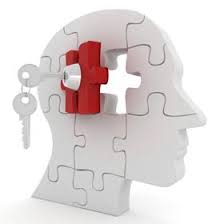 Self-directed learning is closely tied to motivation, goal setting, self-control and other positive characteristics that are highly sought after in the work force. In order to achieve success in a corporate climate or become a successful entrepreneur, people must exhibit self-direction. It isn’t that the self-direction is rewarded but rather the results of the self-direction that is highly sought in business.
Self-directed learning is closely tied to motivation, goal setting, self-control and other positive characteristics that are highly sought after in the work force. In order to achieve success in a corporate climate or become a successful entrepreneur, people must exhibit self-direction. It isn’t that the self-direction is rewarded but rather the results of the self-direction that is highly sought in business.
Nurturing self-direction begins in childhood and can be changed and increased through adulthood. According to the Northwest Regional Educational Laboratory’s most recent assessment (www.nwrl.org) “helping students become self-directed learners who take responsibility for their own academic performance” was ranked near the top of identified priorities by 75% of teachers.
So who are self-directed learners? These are the high performing students, responsible owners and managers in business and corporate executives who manage their own learning process. They have skills that allow them to access information for a specific purpose. Their self-direction integrates self-management and self-monitoring.
Research has shown that in adult education, gifted education and web-based/distance learning students are more effective if they are self-directed learners. This educational concept has also been extended to the “No Child Left Behind” initiative.

Before nurturing self-direction we must first be able to define it. The foundations of becoming a self-directed learner are motivation, self-efficacy, control, self-regulation and goal orientation. These traits are more likely to happen when teachers, parents and employers understand and foster them.
 Looking briefly at each individual trait will help when nurturing self-direction in children and adults. Motivation is actually multidimensional but for functional purposes it is the various reasons why people choose to engage in a task or not. Motivation is influenced by intrinsic and extrinsic motivators. The intrinsic motivators are those that do not depend upon others. These motivators push people to achieve more because they will become better people while the extrinsic motivating factors are those that include parental approval, work bonuses and raises.
Looking briefly at each individual trait will help when nurturing self-direction in children and adults. Motivation is actually multidimensional but for functional purposes it is the various reasons why people choose to engage in a task or not. Motivation is influenced by intrinsic and extrinsic motivators. The intrinsic motivators are those that do not depend upon others. These motivators push people to achieve more because they will become better people while the extrinsic motivating factors are those that include parental approval, work bonuses and raises.
Goals are a narrower concept of motivation. This is the ability to set goals and make plans. Goal oriented people set challenges for themselves and maintain a high level of commitment to their task despite obstacles. And control is the tendency to ascribe achievements and failures to either internal factors that they control (the sign of an optimist) or external factors beyond their control (blaming behavior of a pessimist).
The final trait is self-regulation or the ability to control their interest, attitude, and effort toward a task or a goal. Interestingly research has found that people who have a high level of self-direction also have a higher level of internal control, self-regulation, intrinsic motivation and are goal oriented.
Nurturing self-direction at the K-12 level all the way through college will make for more highly motivated work force and an increased awareness of the factors that motivate each individual person. These motivating factors will improve the outcome of our society as a whole as each person is pushed to achieve his or her best.


Leave a Reply